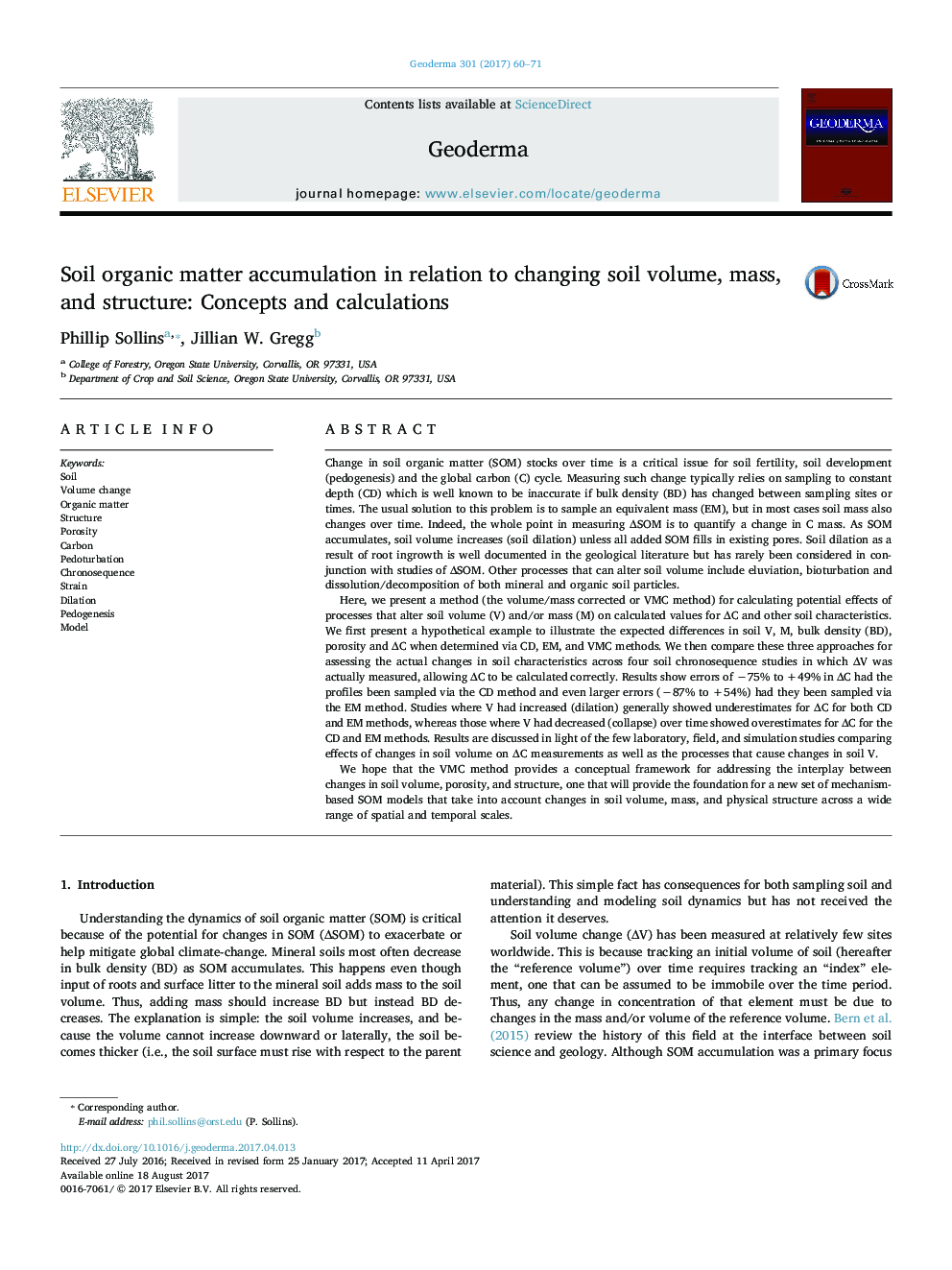| کد مقاله | کد نشریه | سال انتشار | مقاله انگلیسی | نسخه تمام متن |
|---|---|---|---|---|
| 5770321 | 1629416 | 2017 | 12 صفحه PDF | دانلود رایگان |
- Soil volume changes deserve increased attention.
- ÎC can be calculated correctly if ÎV is also measured.
- Sampling to constant depth and equivalent mass can both yield large errors in ÎC.
- More research is needed on processes that change soil porosity.
- Soil structure is dynamic: SOM models need to be based on soil particle dynamics.
Change in soil organic matter (SOM) stocks over time is a critical issue for soil fertility, soil development (pedogenesis) and the global carbon (C) cycle. Measuring such change typically relies on sampling to constant depth (CD) which is well known to be inaccurate if bulk density (BD) has changed between sampling sites or times. The usual solution to this problem is to sample an equivalent mass (EM), but in most cases soil mass also changes over time. Indeed, the whole point in measuring ÎSOM is to quantify a change in C mass. As SOM accumulates, soil volume increases (soil dilation) unless all added SOM fills in existing pores. Soil dilation as a result of root ingrowth is well documented in the geological literature but has rarely been considered in conjunction with studies of ÎSOM. Other processes that can alter soil volume include eluviation, bioturbation and dissolution/decomposition of both mineral and organic soil particles.Here, we present a method (the volume/mass corrected or VMC method) for calculating potential effects of processes that alter soil volume (V) and/or mass (M) on calculated values for ÎC and other soil characteristics. We first present a hypothetical example to illustrate the expected differences in soil V, M, bulk density (BD), porosity and ÎC when determined via CD, EM, and VMC methods. We then compare these three approaches for assessing the actual changes in soil characteristics across four soil chronosequence studies in which ÎV was actually measured, allowing ÎC to be calculated correctly. Results show errors of â75% to +49% in ÎC had the profiles been sampled via the CD method and even larger errors (â87% to +54%) had they been sampled via the EM method. Studies where V had increased (dilation) generally showed underestimates for ÎC for both CD and EM methods, whereas those where V had decreased (collapse) over time showed overestimates for ÎC for the CD and EM methods. Results are discussed in light of the few laboratory, field, and simulation studies comparing effects of changes in soil volume on ÎC measurements as well as the processes that cause changes in soil V.We hope that the VMC method provides a conceptual framework for addressing the interplay between changes in soil volume, porosity, and structure, one that will provide the foundation for a new set of mechanism-based SOM models that take into account changes in soil volume, mass, and physical structure across a wide range of spatial and temporal scales.
Journal: Geoderma - Volume 301, 1 September 2017, Pages 60-71
